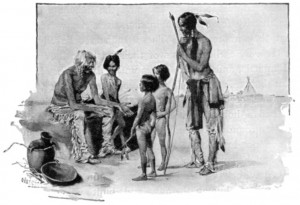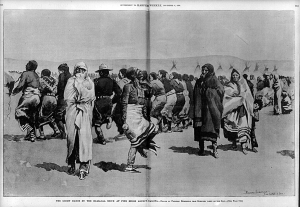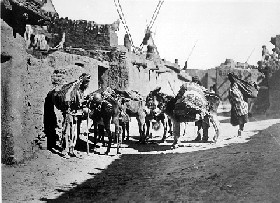Admitting a patient to the Canton Asylum for Insane Indians was usually an easy–and fast–procedure. Since patients were not generally committed through legal process, a series of letters was usually sufficient to justify cause, ask for admittance, and give permission for it. Patients’ rights were trampled of course, but records show that many of those who urged a patient’s commitment felt that they were doing the right thing.
Lillian Burns, a young Laguna woman at Albuquerque Pueblo Day School, evidently became violent and uncontrollable on June 19, 1912. She was taken to the Laguna sanatorium, but the staff could not supervise her constantly and had to call in various teachers, police, and farmers for help. J. B. Burke, Clerk in Charge at the Pueblo Day School, asked a local doctor for help; Dr. Dillon contacted the Indian Office, and after no response, suggested taking Burns to the State Insane Asylum in Las Vegas.
In his telegram concerning this commitment, Dr. Dillon asked: “Can we bring her on number ten to-morrow. Impossible and inhumane to keep her here longer, otherwise must turn her over to sheriff.”
Burke wired Dr. Dillon (and evidently the Indian Office as well) to arrange for Burns to be sent to the Canton Asylum, instead. The Indian Office responded with a telegram of its own authorizing $100 to cover transportation and expenses, and Burke acted on that as permission to send Burns to the Canton Asylum.
Lillian Burns, who was taken ill on June 19, was admitted to the Canton Asylum for Insane Indians on June 25, less than a week later. Fortunately, she was a patient who, unlike most, did not spend a lot of time there. She was released in April, 1913.





